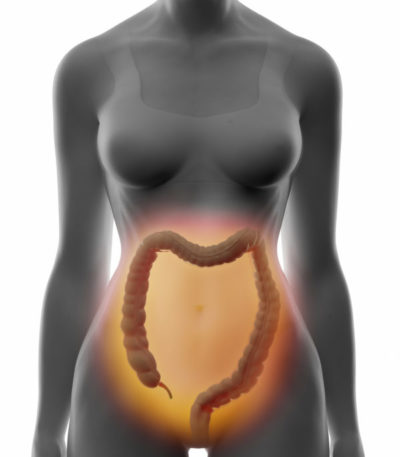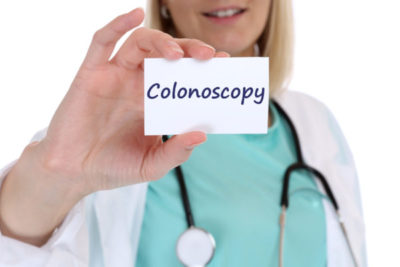At DDC Orlando a patient occasionally objects strongly to a colonoscopy. “No, doctor, I prefer a sigmoidoscopy.” Our 48-year-old case study patient, Liz added, with anxiety, “My mom had both of those procedures. And the sigmoidoscopy was so much easier. With the colonoscopy, she woke up on the table with awful pain. I’d rather have one of those sigmoidoscopy things with no pain and no drugs.”

Is a Colonoscopy less painful than a Sigmoidoscopy?
In this week’s article, we aspire to correct the misconceptions of Liz and others like her. These are the ones who think they might prefer to risk colorectal cancer with a lesser test than a colonoscopy. You can no longer judge a procedure by the previous generations experiences.
The New Generation of Colonoscopy Procedures vs. Sigmoidoscopy
There are several main reasons that the doctors and healthcare professionals say 21st Century Colonoscopy can not be compared to your grandmother’s or even your mother’s sigmoidoscopy or colonoscopy. Instead of taking a sigmoidoscopy, we highly recommend the gold standard of colorectal tests and digestive investigation. The state of the art is the 21st-century colonoscopy.
About those Rumors and Internet Articles
Whereas it is true that you might have heard that the USPSTF (United States Preventive Services Task Force) recently, re-affirmed sigmoidoscopy as significantly reducing risk for death from colorectal cancer. However, they in no way rated it equal to a colonoscopy.
Comparing the Colonoscopy of Yesterday with Today’s Improved Procedures
There are several reasons that we say 21st Century Colonoscopy cannot be compared to your grandmother’s or even your mother’s colonoscopy or sigmoidoscopy. Likewise, these same reasons explain why we advise you to take a regular colonoscopy instead of pursuing a sigmoidoscopy.
-

Colon intestine
In the first place, we have better instruments and monitoring.
- In the second place, and equal to number one, we have better relaxation medications called heavy sedation.
- You have to clear the bowel for either test, so we ask, “Do you really want to go through the process twice if your procedure might indicate you still require a colonoscopy?
- In addition, since colonoscopy is the medical industry standard of best for your comfort, why would you want to endure the pressure, pain and cramps of a fully conscious sigmoidoscopy?
- Your specialist is able to get a full view of your entire colon only with the colonoscopy.
- Your doctor can actually see the walls and tissues of your colon when you are in a state of deep sedation.
The Sigmoidoscopy View: Colonoscopy vs. Sigmoidoscopy
With a sigmoidoscopy, keep in mind that your healthcare professionals only see about 1/3 of your colon. With a colonoscopy, the gastroenterologist can examine your entire colon. Be sure to discuss your testing options with your doctor. However, typically we recommend that you choose the option of a complete colonoscopy.
A sigmoidoscopy offers your specialist visualization of only the lower section of the large intestine. As stated above, that’s only about a third of your colon. If your doctor suspects cancer or polyps farther into the colon, flexible sigmoidoscopy alone can not detect them. You need a colonoscopy to give your doctor a complete view.
If your primary care physician specifies a sigmoidoscopy, be sure to discuss more comprehensive testing procedures with him or her. “Not surprisingly, that means it can miss a large number of polyps, says Richard Schilsky, M.D., a specialist in gastrointestinal cancers at the University of Chicago.”
Today: It’s Not Your Grandmother’s Colonoscopy!

Colonoscopy cancer screening is the preferred method for a complete view and treatment.
Not only can your doctor see more through today’s technological advances in instrumentation, but he can also do more, as we have shown you in previous blogs. In addition to taking biopsies, the doctor can administer treatments during a complete colonoscopy, using instruments attached to the scope.
Most importantly, the complete colonoscopy affords the highest comfort level to the patient. After her mother’s horror story of being awake through much of her colonoscopy and in a high degree of fear, abdominal pain and cramping, and numerous polyp removals, we were not surprised that Liz was afraid of a full colonoscopy.
At DDC Orlando Deep Sedation is Key to Patient’s Comfort and Security
DDC Orlando puts patients’ safety and security first. That’s why we use only deep sedation for our colonoscopies. Our own Dr. Sanjay Reddy assures you that today’s medicines have come a long way since the time of our mothers and grandmothers.
Carefully monitored deep sedation leaves our patients in the recovery area asking, “Have you already done the procedure?” They are completely and pleasantly surprised that their colonoscopy, biopsies and perhaps treatment has already been completed, and it’s time to go home. Our patient satisfaction ratings with the procedure have brought us accolades and range in the 97-98 percent categories.
An unexpected plus of today’s deep sedation such as Propofol, also called Diprovan, we can actually see better to “more clearly investigate the walls of the colon when the patient is securely sleeping.”
A Note about Virtual Colonoscopy
You might also hear about the new technology called “virtual colonoscopy,” as mentioned on CBS. It is very advanced software which reads CT scans of the bowel and translates them into imagery.

Jumping for joy: 21st Century Colonoscopy ends the threat of cancer.
But, do not be tempted by virtual reality medicine. You will still have to prepare your bowel the night before the procedure.
Thus, Dr. Schilsky stated the obvious, given the option of real vs. virtual according to CBS. He still advises his patients to have the real thing. The reason, he tells WebMD, is that any polyps that are found via colonoscopy can be immediately removed. Patients who have suspicious polyps found by CTC must still undergo colonoscopy to have them taken out.
DDC Orlando closes with a final note from the American Cancer Society. They caution you that all too often people don’t take the time to have a colonoscopy, and it’s sad to note that younger people are cutting their lives short by ignoring their doctor’s warnings. Take the time for your colorectal screening, and if your primary care physician recommends it, follow up with the gold standard of screening, the colonoscopy. Your life might depend on it.
